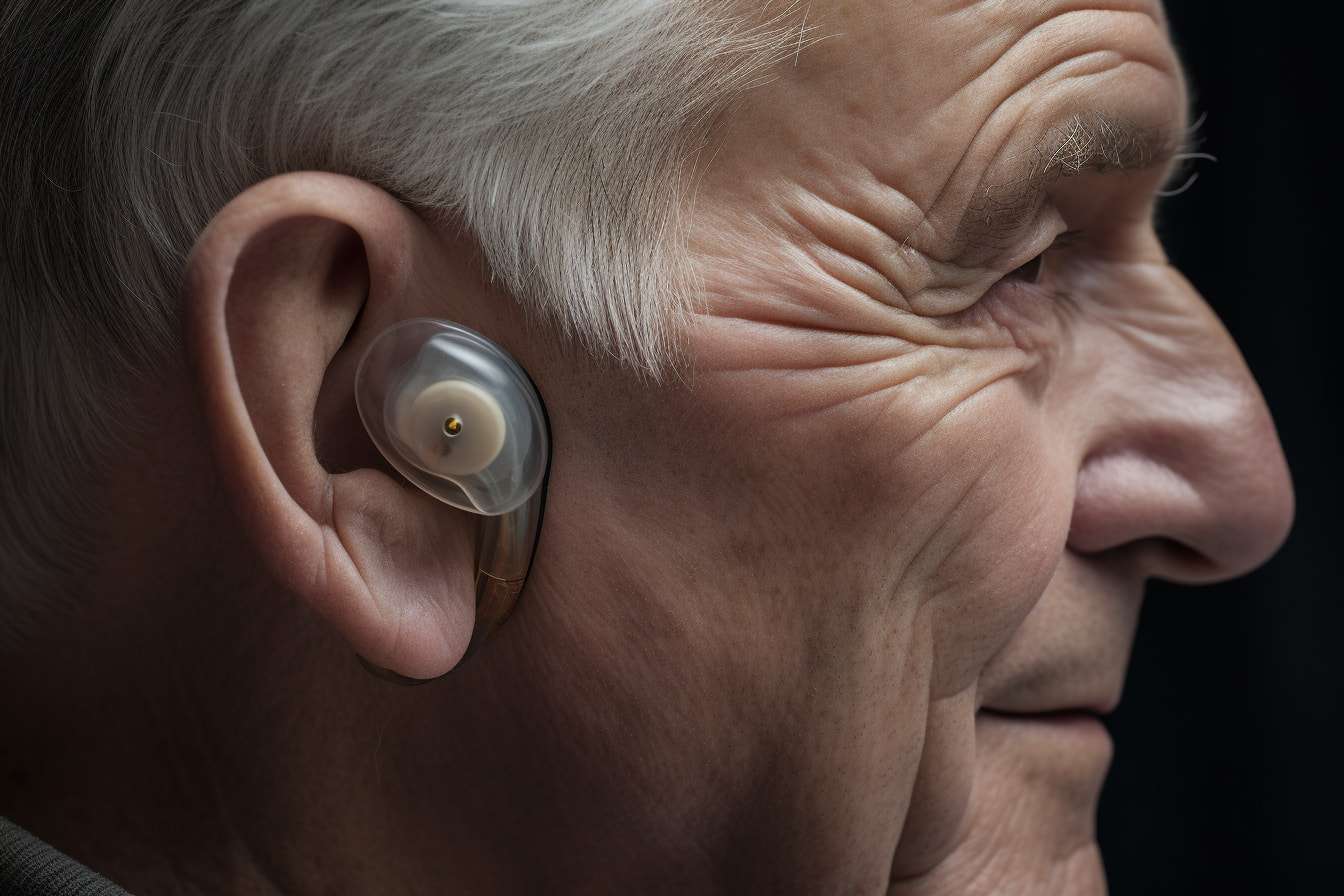There are various reasons why you’d want earphones that can disguise as hearing aids, whether for personal reasons, privacy, or comfort! Hearing devices have come a long way in the last few decades, and while much of it has been brilliant improvements, can you get earphones that disguise as hearing aids?
You can get Personal Sound Amplification Products (PSAPs) earphones that disguise themselves as hearing aids. Earphones like AirPods and Jabra Elite 85t are also useable as hearing aids. Signia Active, Signia Active Pro, and ReSound hearing aids can disguise perfectly as earphones.
There are options for disguising earphones as hearing aids or hearing aids as earphones. They both have their merits, so we’ll talk about each, looking at viable options for each and exploring the features that make them worthwhile!
What are earphones that disguise as hearing aids?
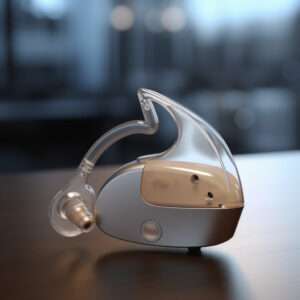
Definition and design
Earphones that disguise as hearing aids are devices designed to look like traditional hearing aids but function as earphones. They are typically small, discreet, and made to fit comfortably in the ear. The design of these devices varies, but they generally have a sleek and modern appearance.
How they work and how they differ from traditional hearing aids
Earphones that disguise as hearing aids use technology similar to that found in traditional hearing aids, such as digital signal processing and noise reduction algorithms. However, they differ in that they are not designed to amplify sound for people with hearing loss. Instead, they are primarily meant for listening to music or other audio content, while also allowing the user to hear their surroundings.
Features and functions
Earphones that disguise as hearing aids may have a range of features, such as wireless connectivity, touch controls, and voice assistants. Some may also have specialized features, such as noise-cancelling capabilities or the ability to adjust sound levels based on the user’s environment. They are generally powered by a rechargeable battery and can be charged using a USB cable.
Overall, earphones that disguise as hearing aids offer a discreet and stylish way to listen to audio content while also being aware of one’s surroundings. However, they should not be used as a replacement for traditional hearing aids, and individuals with hearing loss should consult with a medical professional to determine the best course of treatment.
Pros and Cons of earphones that disguise as hearing aids
Pros
Pros | Description |
Convenience and comfort | Earphones that disguise as hearing aids are often smaller and lighter than traditional hearing aids, making them more comfortable to wear for long periods of time. They are also less noticeable, providing a sense of privacy and reducing stigma associated with hearing loss. |
More affordable | Earphones that disguise as hearing aids are generally less expensive than traditional hearing aids, making them more accessible to those with limited budgets. |
Customizable settings and features | Many earphones that disguise as hearing aids offer customizable settings, allowing users to adjust sound levels and frequencies to their personal needs and preferences. Some also come with additional features such as noise cancellation and Bluetooth connectivity. |
Cons
Cons | Description |
Limited effectiveness | While earphones that disguise as hearing aids may provide some benefit for mild to moderate hearing loss, they are not as effective as traditional hearing aids for more severe cases. They may also amplify background noise and distort sound, leading to further hearing damage. |
Lack of professional support and guidance | Unlike traditional hearing aids, earphones that disguise as hearing aids are not regulated by the FDA and do not require a prescription. This means users may not receive the necessary professional support and guidance to ensure proper use and maintenance. |
Potential misuse and harm | Earphones that disguise as hearing aids may be misused or overused, leading to further hearing damage. Additionally, they may delay the diagnosis and treatment of underlying hearing problems, resulting in more severe hearing loss over time. |
Regulations and Recommendations
Current regulations and standards
Earphones that disguise as hearing aids fall under the regulatory scope of the Food and Drug Administration (FDA) in the United States. The FDA regulates hearing aids as medical devices, but earphones that disguise as hearing aids may not be classified as medical devices if they are marketed as personal sound amplification products (PSAPs) rather than hearing aids. PSAPs are intended for individuals with normal hearing and may not be marketed as a treatment for hearing loss. As such, they may not be subject to the same level of regulation as hearing aids.
In other countries, such as the European Union and Canada, earphones that disguise as hearing aids are also regulated as medical devices, subject to similar standards and regulations as traditional hearing aids.
Recommendations for safe and effective use
While earphones that disguise as hearing aids may offer convenience and affordability, it is important to use them safely and effectively. The following recommendations can help ensure the best possible outcomes:
- Consult with a qualified hearing healthcare professional before using earphones that disguise as hearing aids. This can help ensure that they are appropriate for your hearing needs and that you are using them safely and effectively.
- Follow the manufacturer’s instructions for use carefully, including proper cleaning and maintenance.
- Avoid prolonged use or exposure to high-volume sounds, which can cause hearing damage.
- Seek medical attention if you experience any discomfort, pain, or changes in your hearing.
- Regularly monitor your hearing and seek professional advice if you notice any changes or difficulties.
Warnings against misuse and fraud
Earphones that disguise as hearing aids are not intended to replace medical treatment for hearing loss or other conditions affecting hearing. Misuse of earphones that disguise as hearing aids can cause hearing damage or other health problems.
Consumers should be aware of fraudulent claims or misleading advertising that promote earphones that disguise as hearing aids as medical devices or cures for hearing loss. It is important to research the product and the manufacturer, read reviews and feedback from other users, and consult with a qualified hearing healthcare professional before making a purchase.
Comparison between earphones that disguise as hearing aids and traditional hearing aids
Differences in technology and effectiveness
Earphones that disguise as hearing aids use advanced audio technology, such as noise cancellation and speech enhancement, to provide a clearer and more personalized listening experience. However, they may not be as effective as traditional hearing aids in treating hearing loss, especially severe cases.
Traditional hearing aids are medical devices designed to amplify sound and improve hearing. They are regulated by the FDA and require professional fitting and adjustment to ensure maximum effectiveness.
Differences in cost and availability
Earphones that disguise as hearing aids are generally more affordable and widely available than traditional hearing aids. They can be purchased online or in electronics stores without a prescription or professional evaluation.
Traditional hearing aids can be expensive, often costing thousands of dollars per device. They are typically covered by insurance or government programs for those who qualify.
Factors to consider when choosing between the two options
When deciding between earphones that disguise as hearing aids and traditional hearing aids, there are several factors to consider:
- The severity and type of hearing loss
- Personal preferences and lifestyle
- Budget and insurance coverage
- Professional guidance and support
- Potential risks and benefits
Do You Get Headphones Disguised as Hearing Aid?
Particular earphones are Personal Sound Amplification Products (PSAPs) that you can disguise as a hearing aid and that work by amplifying sounds around you so that you can hear them more clearly.
It’s possible to use Apple AirPods or other wireless alternatives as hearing aids. When you pair them with your iPhone, they have adjustable settings for noise cancellation or transparency mode, which allows you to hear environmental sounds while listening to music or other audio.
On the other side, the Signia Active & Signia Active Pro are hearing aids that look precisely like earphones but have all the capabilities of a hearing aid and more!
The Signia Active is a sound amplifier that amplifies all the sound around you. The Signia Active Pro is for those with mid to moderate hearing loss and is programmable by a licensed provider or professional to cater to your hearing needs.
Its impressive modern aesthetic also includes the ability for Bluetooth streaming, on-the-go recharging, an instant & comfortable fit, and even an AI digital assistant.
ReSound also developed highly customizable hearing aids that can disguise as earphones – ideal for treating your hearing with something that looks like wireless earphones.
What Other Earphone Brands Can You Disguise As Hearing Aids?
While Apple AirPods is one of the more popular earphone brands used as hearing aids, other alternatives exist. Other alternatives include:
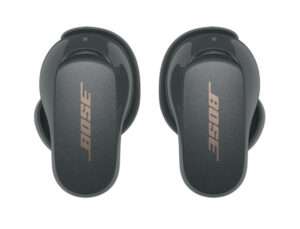
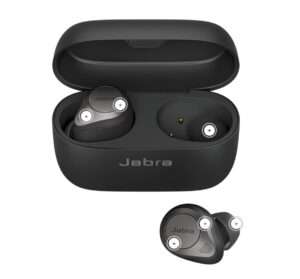
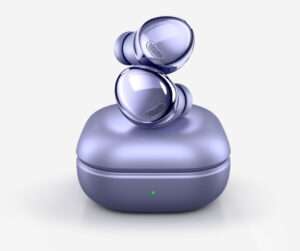
![]()
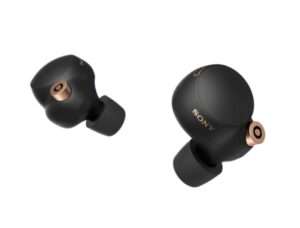
Earphones are not a substitute for a hearing aid, but that doesn’t detract from its multitude of benefits, such as:
- They help to amplify sounds around you and improve your hearing.
- It will benefit you if you don’t want people to know about your hearing loss because it doesn’t look like a hearing aid.
- Earphones fit inside your ear, while some hearing aids that go around your ears can interfere with your glasses, headbands, or visors.
- Sometimes you need to listen to something on your phone while in public. If you’re already using wireless earbuds to help with your hearing loss, you can also use them to stream audio directly from your smart device into both ears without disturbing others.
Conclusion
While earphones that disguise as hearing aids can be a useful tool for some individuals, it is important to use them safely and effectively. Users should follow current regulations and recommendations, such as those set by the FDA, and should be aware of the potential risks and limitations. It is also important to consult with a healthcare professional before using these devices.

